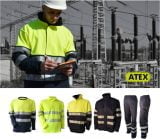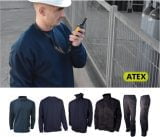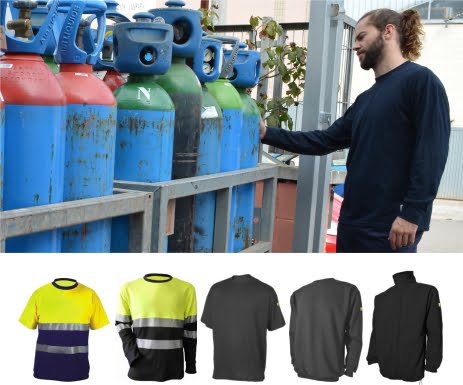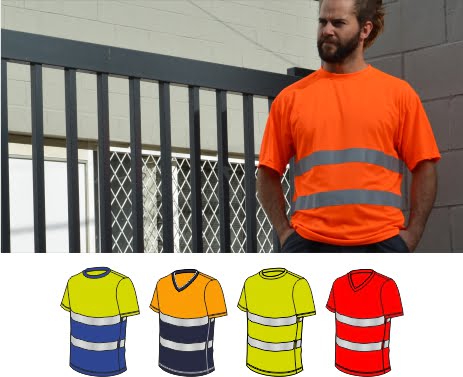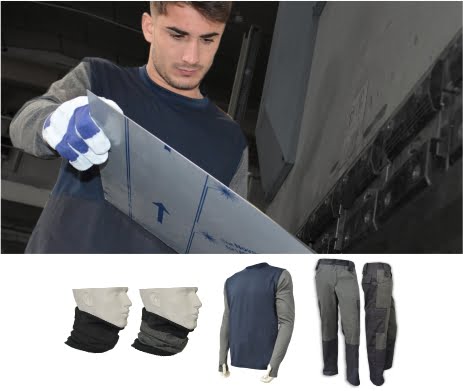Standards
SUMMARY OF THE EUROPEAN REGULATORY FRAMEWORK APPLICABLE TO PROTECTIVE GARMENTS.
The accession of Spain to the European Union meant a step forward in the protection and safety measures of workers thanks to the implementation of the European “EN” or international “EN ISO” standards.
Continuing with our business line of innovation and development aimed at providing the user of our protective garments and work uniformity with a greater degree of comfort and safety, we have designed them following the guidelines set by the different European Standards, and we have applied the latest advances in textile technology. In the following lines, we offer a summarized vision of the main Standards that we apply to our garments.
DEFINITIONS
- P.P.E. : Personal Protective Equipment. “… .. any device or means that a person is going to carry or have, in order to protect them against one or more risks that may threaten their health and safety. …… “
- European Directive: legal text issued by the European Commission. Some examples are: Directive 89/686 / EEC, Directive 89/656 / EEC, etc.
- Regulation EU 2016/425 of the European Parliament: is a new regulation that comes to replace the repealed Directive 89/686 / EEC.
- Harmonized Standard : text prepared by the CEN (European Committee for Standardization) after having received the mandate from the European Commission to draft the harmonized standards that support the directives. These harmonized standards are mandatory for member countries to adopt. Some examples are: EN ISO 13688, EN ISO 11612, EN ISO 20471, etc.
- “CE” mark : the garments or other articles bearing it meet the essential health and safety requirements detailed in EU Regulation 2016/425.
- EU Type Examination : certificate issued by a notified body that PPE complies with the specified standards.
- EU Declaration of Conformity: document drawn up by the manufacturer of the PPE in which it declares that it is in accordance with the EU Regulation 2016/425 and the corresponding harmonized standards according to the risk against which it protects. Category I PPE does not require this declaration to be certified by any notified body.
- Background material: Highly visible colored fluorescent material.
- Retro-reflective material: material that reflects, increased, the light that falls on it.
- Dissipation of charge. : elimination of electrostatic charge through a material, resulting in a decrease in charge density or surface potential, at the point where the charge was deposited load.
REGULATION EU 2016/425 of the European Parliament
The purpose of this new Regulation is to establish the minimum essential requirements that all personal protective equipment must meet, regardless of the place where the activity is being carried out.
In it, among other things, PPE is classified into three categories (Article 19):
- category I : due to their simple design, the user can judge for himself their effectiveness against minimal risks, and whose effects, when they are gradual, can be perceived in time and without danger for the user. They may be manufactured without subjecting them to EC type examination. This category includes, among others, protective garments against atmospheric agents that are neither exceptional nor extreme (hats, seasonal clothing, shoes and boots, etc.). Must bear the CE mark
- category II : these are protective equipment of medium design that protects against something in particular and is not classified as category I (simple design) or category III (complex design). The manufacturer of the same is obliged to gather the technical documentation indicated in Annex III, and to pass the EC Type examination. High visibility garments (EN ISO 20471), some garments with fire retardant properties (EN ISO 11612), etc. belong to this category. They must bear the CE mark.
- category III : These are PPE models of complex design intended to protect the user from any mortal danger or danger that could seriously and irreversibly damage health, without their being able to be discovered in time. immediate effect. They are obliged to gather the technical documentation indicated in Annex III, to pass the EC type examination, and to undergo the adoption of one of the two EC quality assurance systems set out in article 19-c. They must bear the CE mark
NORM EN ISO 13688: 2013 – Protective clothing. General requirements.
This is a new reference standard that is used as indicated in other specific standards. This Standard cannot be used alone, but in combination with other specific standards. This Standard repeals and replaces the old EN 340: 2004.
This European Standard specifies the general requirements for ergonomics, aging, sizing and marking of protective clothing and for the information supplied by the manufacturer.
-
- Ergonomics : among other conditions, protective clothing must be designed and manufactured in such a way that its materials and components do not adversely affect the user, it must offer the maximum possible comfort, it must be easy to fit and should be as light as possible.
- Aging : this Standard only contemplates that produced by the alteration of color, cleaning and change in dimensions after washing.
- Sizes : in the designation of protective clothing sizes, the measurements have been prescribed in such a way as to define the body size. To this end, they must show at least two dimensions of the body in centimeters: the height and the contour of the chest, or the height and the waist. To indicate the size, the normalized pictogram must be used:
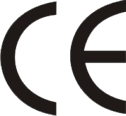

- Marking : each garment will be marked on the article itself, in a visible, legible and durable way with the information required by the specific Standard.
NORM EN ISO 20471: 2013 – High visibility signaling clothing
This Standard cancels and replaces the previous EN 471: 2004.
The objective of this new European Standard is to specify the characteristics that the clothing intended to visually signal the presence of the user must have, so that it is detected in risky conditions, under any type of daylight and under the light of the headlights of a car in the dark.
It defines three colors of the background material: yellow, orange and red. The characteristics that the background material and the retro-reflective material must meet are also determined, as well as the minimum surfaces thereof, based on which the three classes of protective clothing are differentiated (see table).
All PPE certified as high visibility protective clothing in any of its three classes must also meet the requirements of EU Regulation 2016/425 according to which they are classified as category II.
The highlights of this Standard are the following:
– Any garment certified according to this Standard must present a minimum surface of background material in high visibility colors and another minimum surface of retro-reflective material, as well as meet certain design requirements.
– Colors of the background material : yellow, red-orange and red, all of them fluorescent and within some chromatic coordinate values.
– retro-reflective materials must meet minimum values of retro reflection, resistance to washing, rubbing, etc.
– high visibility garments are classified into three classes based on the minimum surfaces of each material. Class 3 clothing has the largest surface area of background and retro reflective material, obtaining the highest level of visibility both day and night under the headlights of a car. It is followed by Class 2 with an intermediate level, and Class 1 with the lowest level of visibility.
| Minimum visible surfaces of each material in m2 | |||
| Class 3 clothing | Class 2 clothing | Class 1 clothing | |
| Background material | 0.80 | 0.50 | 0.14 |
| Retroreflective material | 0.20 | 0.13 | 0.10 |
| Combined material | – | – | 0.20 |
The PPE must visibly and permanently bear a specific marking with the following information:
- manufacturer name
- reference or name of the PPE
- size designation according to EN ISO 13688: 2013
- the number of the Standard: EN ISO 20471
- pictogram and performance level:
- labeling of high visibility garments: in addition to the usual data, the specific pictogram indicating the class of the garment ( X ) must be displayed in a visible place

- information sheet
: all high visibility protective clothing must be accompanied by an information leaflet with instructions for use and maintenance, explanation of the pictogram symbols, recommendations for use, etc.
- official certification : in order to be marketed, the PPE high visibility must have passed the EC type examination and have the consequent certification issued by a Notified Control Body.
EN ISO 11612: 2015 STANDARD- Protective clothing for workers exposed to heat and flame .
This Standard cancels and replaces the old UNE-EN 531/96.
Protective clothing that complies with the new European Standard is intended to protect workers from brief contact with flames and at least one type of heat . The heat can be in the form of direct flame, convective heat, radiant heat, contact heat, significant splashes of molten metal or a combination of them and there is a European Standard for the evaluation of each of the types, with a classification in three levels (1, 2 and 3) to indicate exposure to low, medium or high perceived risk respectively.
This Standard is only applicable for PPE for body protection, excluding the head, face, hands and / or feet. It is also not applicable to structural fire fighting garments and use in welding and associated processes.

All garments designed to comply with this European Standard will be clearly, completely and precisely marked with the following information:
- manufacturer name
- code or name of the article.
- size designation
- Pictogram incorporating the number of this European Standard and the performance levels achieved for property A (limited flame spread) and at least one of the other properties, from B to F.
EN 1149-3: 2004 and EN 1149-5: 2018 STANDARDS – Protective clothing. Electrostatic properties. Part 3: Test methods to determine the dissipation of the load. Part 5: material behavior requirements and garment design.
This Standard, in part 3, aims to specify test methods for determining the dissipation of electrostatic charge from the surface of clothing materials. The test methods are applicable to all materials, including homogeneous materials and heterogeneous materials made up of fibers with conductive surfaces and / or fibers with conductive core.
In its part 5, this European standard specifies the requirements for the materials and design of electrostatic dissipative protective clothing, used as part of a complete grounded set, to avoid incendiary discharges. These requirements may not be sufficient in flammable oxygen-enriched atmospheres. This standard is not applicable for protection against mains voltage.

A material with electrostatic dissipation, tested according to EN 1140-3 method 2 (induction charging), must satisfy at least one of the following requirements:
- half-dissipation time t 50 & lt; 4s
- protection factor S & gt; 0.2
IEC 61482-2-2018 STANDARD – Live work. Protective clothing against the thermal hazards of an electric arc. Part 1-2: Test methods. Method 2: Determination of the arc protection class of material and clothing using a limited and directed arc (box test).
This Standard is the international version of the IEC 61482-2: 2018 Standard.
Determines the thermal risk behavior of materials when they are exposed to heat energy from an electric arc with specific characteristics. The behavior of the materials subjected to this process is determined from the amount of heat transmitted through the sample, in addition to other parameters.

From the result of these tests, the Class reached by the protective clothing is determined: Class 1 for an electric arc caused by a current of up to 4 kA for 0.5 seconds, or Class 2 for a current of 7 kA for 0.5 seconds.
The protection equipment certified under this Standard falls within Category III of PPE classification according to EU Regulation 2016/425.
EN 17353: 2020 STANDARD- PROTECTIVE CLOTHING – IMPROVED VISIBILITY EQUIPMENT FOR MEDIUM RISK SITUATIONS – TEST METHODS and REQUIREMENTS
It is the Standard that completes the regulation of protective clothing for low visibility risk situations. Until now, there was only the EN ISO 20471: 2013 standard that regulated clothing for HIGH RISK situations, that is, where the <u> passive </u> user (worker on foot located in an area of passage of vehicles with risk of run over during the day or night) is found on any road with vehicles traveling with a speed from less than 30 km / h (Class 1) to more than 60 km / h (Class 3).
This new Standard UNE-EN 17353: 2020 regulates clothing and accessories that improve visibility in MEDIUM RISK situations, where the passive user (on foot) is in a road where vehicles circulate at less than 15 km / h, or that the active user (person who is on the road, who is part of the circulation and who keeps his attention focused on the traffic, in other words, you are driving some type of vehicle) you are on a road with vehicles traveling at a speed equal to or less than 60 km / h.
This Standard distinguishes between clothing and accessories for use in various situations:
– by day (Class A , fluorescent colored garments)
– at night (Class B, reflective elements), which is subdivided into three categories: B1 for hanging accessories made of reflective material; B2 for armbands and garments with reflective material only on the sleeves; and B3 for garments with reflective material only on the torso, or on the torso + extremities (sleeves and legs)
– both day and night (Class AB) that combines fluorescent materials with reflective elements, or combined material (reflective + fluorescent), and which is subdivided into two groups: AB2 which is the combination of Class A with Class B2, and AB3 which is the combination of Class A with Class B3.
The amounts of fluorescent and reflective material that each garment or accessory must carry are detailed in the Standard, as is their placement on the garment. This new Standard accepts 8 fluorescent colors.
The reflectance and fluorescence requirements of reflective elements and fluorescent fabrics are the same as in EN ISO 20471.
The marking of the garments that are certified under this Standard is specific to it:
The protection equipment certified under this Standard falls within Category III of PPE classification according to EU Regulation 2016/425.




